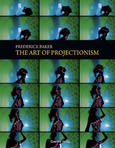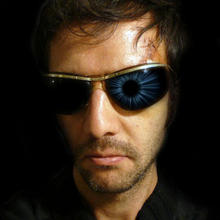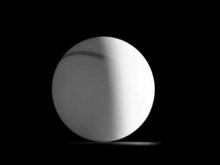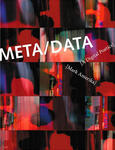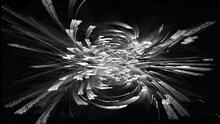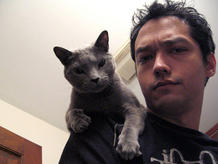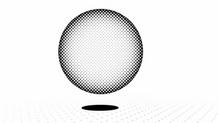CONTAKT
(2008)was a series of interactive performance events to celebrate the 10th anniversary of Richie Hawtin's label Minus. Ali M. Demirel, Hawtin's visualist, produced the show's video and also interacted with the audience.
Ali: This year we are doing a series of events called CONTAKT which has the concept of communicating with the audience on an advanced level. We have an interactive cube at the event, members with RFID cards who come to the event and identify themselves will be displayed in my visuals.
A member comes to the event, approaches the cube, waves his RFID card, the cube identifies him, and the name is written to a file on the Mac Mini connected to the cube. I am connected to that Mac Mini via network cable, and I use the Kineme FileTools "String With URL" Patch, insert the network IP address of the Mac Mini, read that file with the name of the member, and integrate it with a Quartz Composition I have. I trigger and mix Quartz Compositions via VDMX in my performance. I don't do immediate triggering of the identified name because sometimes they don't fit in with the image I perform, so when I see a new identification, I wait for the right moment and trigger it.
Before our first performance, I had some cache issues with that Kineme patch — it was not displaying the latest name sometimes. I posted this issue on the Kineme forum, Christopher added an "Update" input to that patch, and it worked perfectly at the show!
In the first video, you also see another Kineme plug-in based composition used for my live visuals — I took a ParticleTools sample composition and adapted it to my visual set.
In the second video you can see the cube, and how it reacts by changing color and flashing when someone holds up their RFID chipcard.
Beth: Can you explain about the way this cube interacts and how it was set up?
Ali: The visual patterns on the cube are not directly controlled by me — we are thinking about this development for the next release of the cube. At the moment, those patterns are controlled by the Mac Mini which is connected to the cube, simply changing patterns when there is an interaction like identification, upload, or download.
Beth: Which of the visuals are pre-rendered and which are generated live/interactively?
Ali: I use 2 laptops and a video mixer to produce the final output. One of them runs only Processing compositions, and the other runs VDMX triggering Quartz Compositions. Each composition has some variables which I can control manually or via MIDI. I also receive MIDI information from Richie Hawtin's mixer and assign it to some variables. However, mostly, I follow the music and match it manually. A good example would be the Kineme ParticleTools Quartz Composition titled "Fire" — I use this because it gives me very rich graphics and dynamics.

